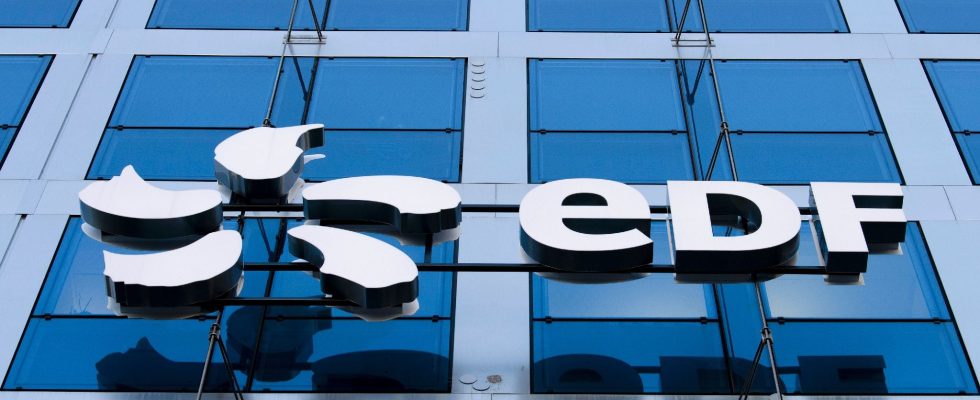There was a time when France produced a lot of electricity. Its nuclear power plants even seemed oversized compared to the country’s energy needs. Those days seem to be well and truly over. Last year, the level of nuclear electricity production fell to 279 terawatt hours (TWh), the worst result since 1988. And the rise promises to be sluggish.
“The situation is improving,” assures Etienne Dutheil, director of the nuclear fleet at EDF. The stress corrosion problem should be definitively resolved in 2025. And the START program, which aims to increase the efficiency of unit shutdowns, is starting to bear fruit. “We rebuilt the schedules, worked on best practices, gave more autonomy to the teams in the field,” explains the manager. Result: the preparation time for a fuel change has fallen from 18 to 11 weeks and EDF is now aiming for 9 weeks. Other good news: outage extensions have been reduced by a third in 2023 compared to 2022. And the sites in greatest difficulty are showing much better performance. Thus, the last partial visit to reactor number 3 of the Paluel power station, including refueling and a major maintenance program, took only 100 days. The best result in at least 12 years. In Saint-Laurent, the simple stop for reloading carried out last year only took 40 days. The shortest duration in the last 8 years.
“Overall, the deadlines relating to the first shutdown phase for fuel reloading are now respected in nearly 70% of cases, compared to less than 10% in 2021, and barely more than 2% in 2019,” summarizes Etienne Dutheil . These efforts allow EDF to post better production prospects: 335-365 TWh in 2025, and 400 in 2030 thanks in particular to the entry into service of Flamanville 3 and the upcoming power increase on several reactors.
But for some experts, something is wrong. “How is it that we are not returning, even in 2030, to the production levels that we experienced in the past?” asks Jean-Jacques Nieuviaert, president of the Society for Studies and Foresight energy. According to data published by RTE, France produced 430 TWh without problem in 2005. And what can we say about the productivity of our power plants compared to that of other countries? “Normal utilization rates oscillate between 78% and 93%. In normal operation, 1 GW of nuclear capacity produces between 7 and 8 TWh, while in France we painfully reached 6 TWh in 2021. With the installations we own , we should normally produce 480 TWh”, assures the expert.
Fukushima has been there
“The recent reversal of the French government’s nuclear strategy has disrupted the agenda of EDF, which mainly invested its resources in the decommissioning (Editor’s note: the gradual shutdown) of the reactors. This has led to an undeniable loss of efficiency “, analyzes Franck Gbaguidi, director of sustainable development at Eurasia Group. Faced with criticism, EDF defends itself. “We are no longer implementing the same industrial program as ten or fifteen years ago. Fukushima has been there. Thus, the 4th ten-year inspections represent, in terms of volume of operations, six times that of the 3rd ten-year inspections. And the preparation work starts eighteen months in advance. Safety requirements have also been strengthened. There are more checks to be carried out compared to what is done in other countries. All of this has an impact on availability power plants”, assures Etienne Dutheil.
Returning to the 2005 production level therefore seems out of reach for the moment. France can still survive winter. “The main thing is the passage of the peak, not the production itself” confirms Hervé Machenaud, former executive director of the EDF group. And the expert makes some calculations: when the Flamanville EPR becomes available next year, we will have around 60 gigawatts available thanks to nuclear power. However, in France, the maximum called at the peak is around 90 gigawatts. The difference can easily be made up through hydraulics, imports and gas plants.”
But even if it does not put the network in great difficulty, EDF’s production deficit still raises eyebrows. “Many specialists say that France, with a better managed fleet, could do without additional renewable energies (ENR),” notes Franck Gbaguidi. “Behind this reasoning is the idea that RE constitutes an obstacle because they would prevent nuclear power from functioning correctly. Indeed, according to the rules in force in Europe, wind energy is called first on the market, forcing the French nuclear power plants to slow down”, recalls an expert.
ENRs, however, have an advantage: that of allowing France not to put all its eggs in one basket. “The crisis in Ukraine showed us that it was better not to be dependent on a single source of energy, whatever it may be,” confirms Franck Gbaguidi. In addition, the development of a new sector can be interesting on the economic plan. The expert therefore remains convinced: there is room in France for nuclear and renewables.
